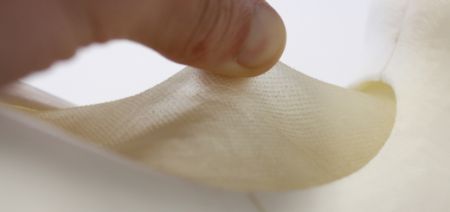May 13, 2015 – L’Oreal, the cosmetics company is into 3D printing seeing it as the future for skincare product testing. They have entered into a research partnership with Organovo Holdings Inc., out of San Diego, California. The two companies want to engineer 3D-printed skin tissue (see image below) that L’Oreal can then use to test beauty products.
Organovo is the developer of the NovoGen Bioprinting Platform which uses proprietary bio-inert hydrogel components for scaffolding and bio-inks made of living cells to build a variety of tissue types.
L’Oreal has launched a significant research and development incubator focused on transforming the beauty business. In partnership with Organovo they hope to use 3D technology to advance developments in skin reconstruction as well as use printed skin for evaluating new beauty and skincare products.
Organovo technology can bioprint a wide range of tissue types from muscle to endothelial to human organ-specific. They have successfully printed human liver tissue that functions just like a mini version of the organ. The company has partnered with Autodesk, the software giant known for AutoCad used by engineers and architects to digitally render their work for years. The application of the company’s computer graphics combined with scanning technology can now be applied to biomedicine for reconstruction of damaged bodies.
With scanners, software and 3D printers surgeons today use biomedical 3D printing for reconstructive procedures. Laboratories doing biomedical research are able to print living tissue types for testing, replacing research that uses laboratory animals. The next decade should yield printed implantable organs that end the need for immunosuppressive drug therapy to ensure no rejection episodes. Two of the most common problems of an aging osteoarthritic population, artificial hip and knee replacement surgery, will be replaced using transplanted 3D bioprinted cartilage, bone and ligaments created from the patient’s own cells. We will also see printed hands and legs replacing prostheses.
And ultimately, if we can print and replace almost every type of tissue and organ in our bodies we will face a dilemma – should we extend life forever through bioprinting? Something to think about in a world that may soon reach a population of more than 9 billion by mid-century.












